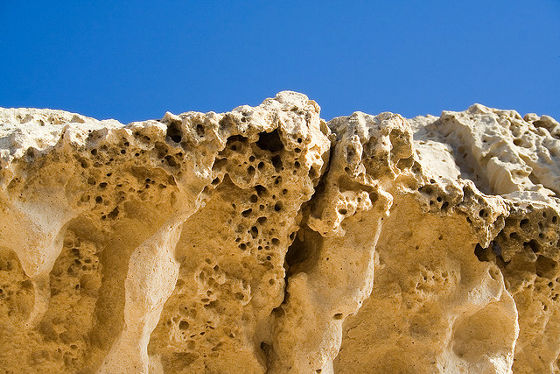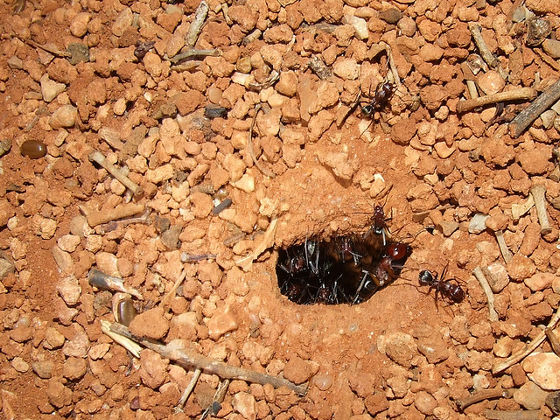Ali found a reduction in atmospheric carbon dioxide in a 25-year-old study

ByCharlie Stinchcomb
In the atmospherecarbon dioxideIt is said that the increase of greenhouse effect is the cause of global warming, and in each country of the worldReduction of CO2 emissionsIs being addressed. The fact that small ants are decreasing such atmospheric carbon dioxide,Arizona State University Geography and Urban Planning SchoolofRonald DolnIt turned out by a professor 's research of 25 years.
Ants as a powerful biotic agent of olivine and plagioclase dissolution
http://geology.gsapubs.org/content/42/9/771
25 year experiment shows ants can break down down minerals, sequester CO2 | Ars Technica
http://arstechnica.com/science/2014/09/25-year-experiment-shows-ants-can-break-down-minerals-sequester-co2/
Many minerals react with carbon dioxideweatheringAn action occurs,CarbonateWhile generatingClay mineralIt will be converted to. In warmer areas, the weathering effect occurs actively, so it consumes more carbon dioxide from the atmosphere and has the effect of cooling the temperature. On the other hand, in cooler climates weathering slows down, so carbon dioxide accumulates in the atmosphere and the temperature tends to rise. It is due to these physical weathering effects that the surface of some rocks are exposed, but the living things may have an influence.
For example, the root of a tree will grow to cracks and gaps, pushing the surrounding rock. In addition,LichensAnd fungi slowly dissolve rocks, and organisms digging holes can also push up rocks. It seems that it is difficult to consider these biological effects in the study of geology.

ByBecky EnVérité
Professor Dorn has been conducting research on long-term data collection of topographical features including weathering from 25 years ago,Catarina mountainsAnd in TexasParo · Duro · CanyonI was doing observation using sand which crushed the basalt of Hawaii etc. Professor Dorn opened a hole of 50 cm under various environments including bare ground, tree root, ant nest, and packed basalt sand in a plastic pipe with a lid, collected samples every 5 years. The professor carried out the measurement of the amount of carbonate produced by the weathering effect from the sample of 25 years and the analysis using the electron microscope.
As a result, it turned out that the weathering effect of the ant nest sample prominently advanced. In places where biological actions such as fungi are confirmed, the weathering progresses by 10 to 40 times faster than usual, but in the ant nest it was 50 to 175 times as well. Also, carbonate was accumulated in ant nest, but it was about the same level as root of tree in termites' nest. There is no one who saw how the minerals inside the ant nests weathered so far, so what kind of phenomenon actually happens depends on future research.

ByBill & Mark Bell
Professor Dorn predicts that ants are accelerating the weathering effect by exposing the minerals to the atmosphere in order to move soil and sand grains for making nests. Furthermore, it is related to the point at which diversification and increase of ants began and the point that shifted from the high temperature climate of the dinosaur period to the Ice Age, several million years ago, and the same point where the carbon dioxide in the atmosphere decreased It may be, it says.
Related Posts:
in Science, Posted by darkhorse_log







